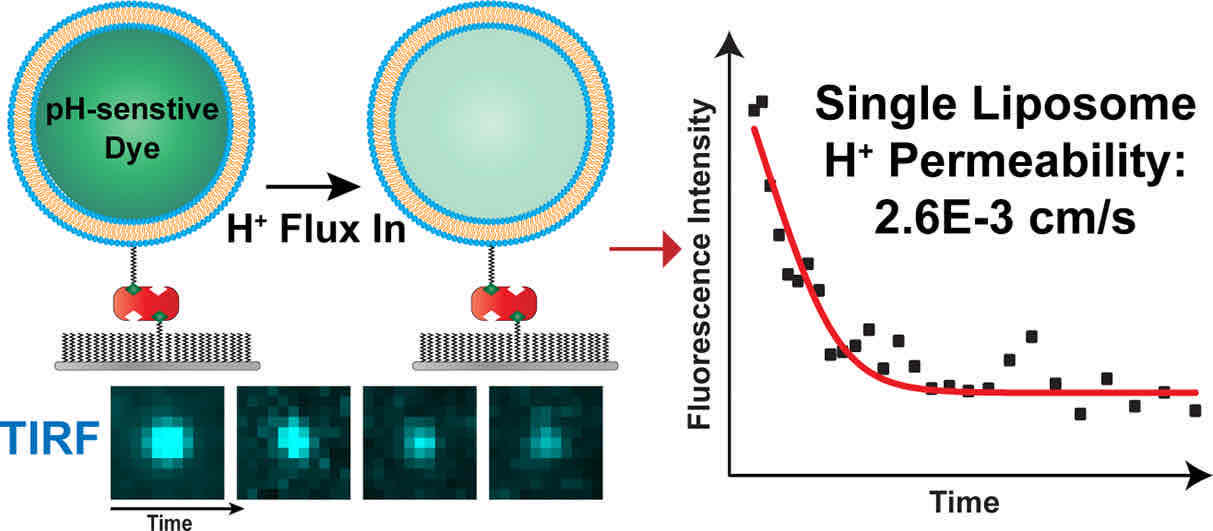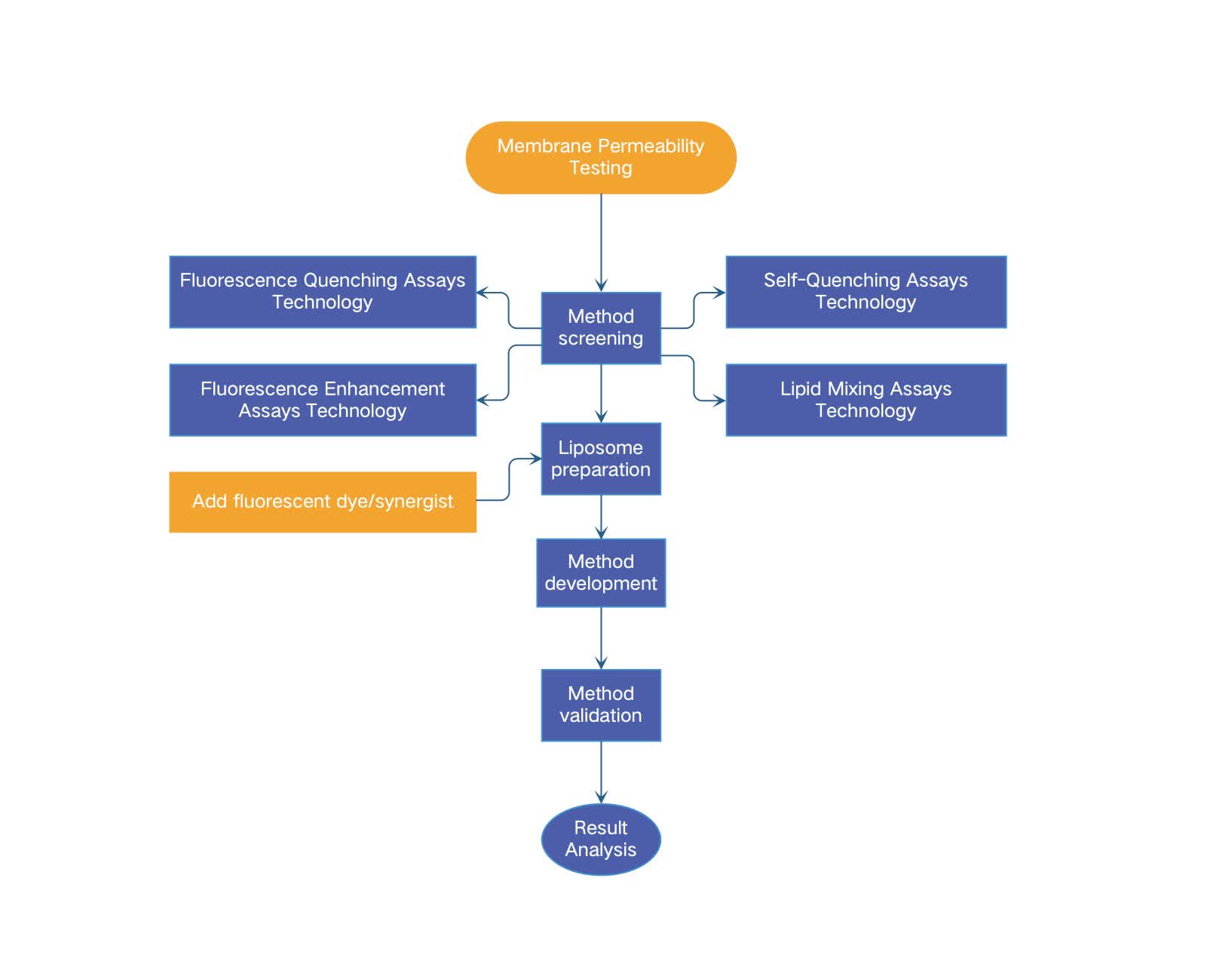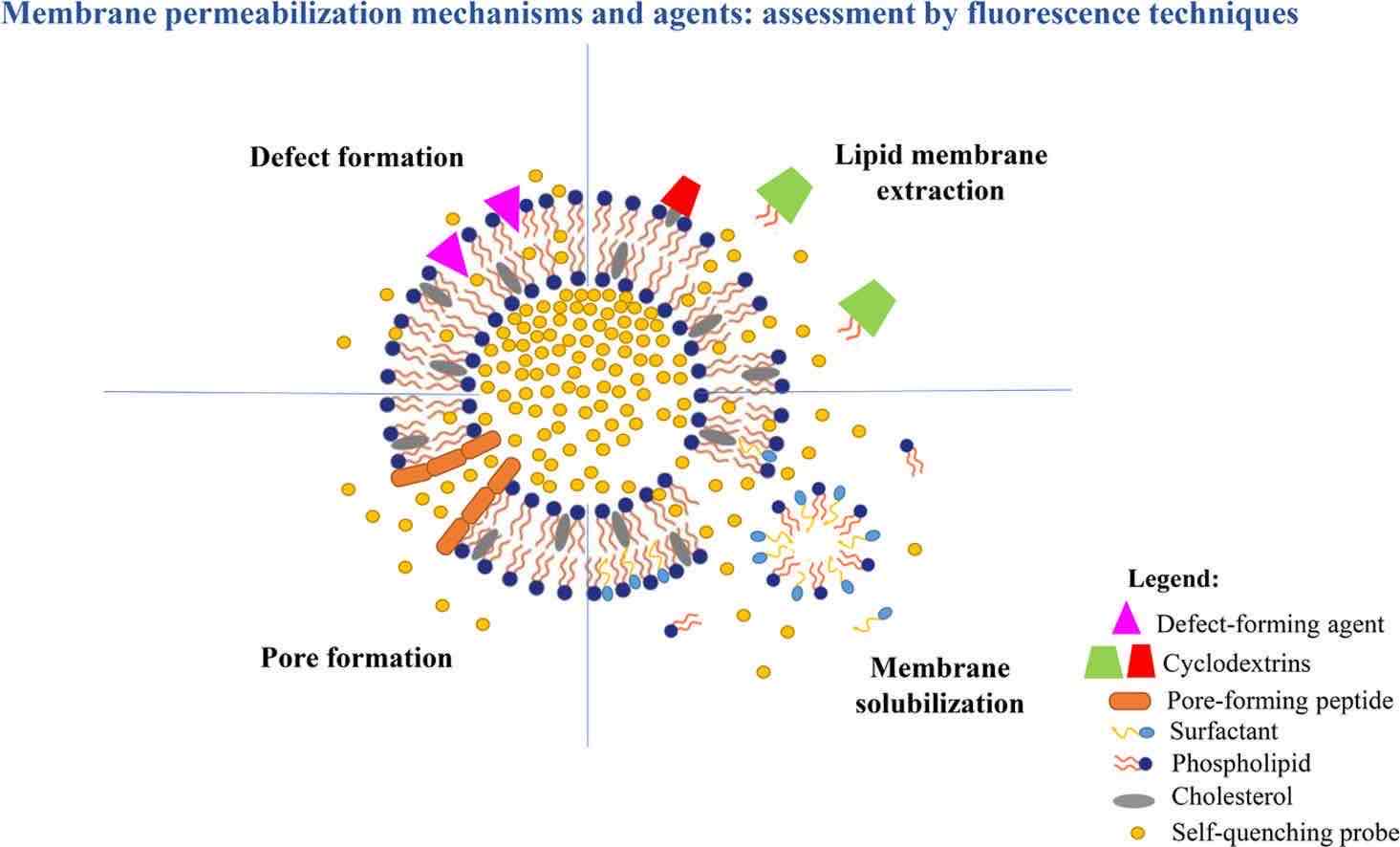Liposome Membrane Permeability Testing
Inquiry
At CD Formulation, we have been dedicated to helping college and corporate researchers solve liposome membrane permeability issues for many years. At our analytical R&D center, we have experienced testing engineers and advanced analytical techniques to ensure that we provide professional liposome permeation evaluation reports. Liposome membrane permeability analysis is an important aspect of our specialized liposome services.
The Importance of Liposome Membrane Permeability Testing
The liposome membrane is a semi-permeable barrier, exhibiting varying rates of diffusion for different ions and molecules. Molecules with high solubility in both aqueous and organic solutions experience minimal hindrance from the phospholipid membrane. Polar substances (e.g., glucose) and polymer compounds exhibit slow passage through the membrane, while small neutral molecules (such as water and urea) diffuse rapidly. Charged ions display distinct behaviors: protons and hydroxyl ions traverse the membrane swiftly, whereas sodium and potassium ions cross it slowly. The permeability of the liposome membrane is influenced by factors such as hydrophobic chain saturation and length, phospholipid type and quantity, as well as medium temperature. Controlling this permeability is crucial to enhance the efficacy of liposome preparations as effective delivery systems; it ensures encapsulation of bioactive agents while facilitating their release at specific target sites. Furthermore, studying how bioactive agents affect liposome membrane permeability contributes to understanding the mechanisms underlying various natural and synthetic drugs.
 Fig.1 Proton permeability of liposome membranes. (Anirvan Guha, et al., 2021)
Fig.1 Proton permeability of liposome membranes. (Anirvan Guha, et al., 2021)
What Can We Do About Liposome Membrane Permeability Testing?
The services we are able to offer are as follows:
Analysis of liposome membrane permeability, assessment
This comprehensive service specializes in offering membrane permeability testing for a wide range of liposomes. Our state-of-the-art facility is equipped to evaluate the permeability of various drug delivery routes, ensuring the effectiveness and efficiency of your pharmaceutical products.
Solutions for liposome permeability testing
We provide professional solutions to improve liposome membrane permeability based on the location and expectations of our customers, such as surface modification or optimized formulation.
Raw and analytical data for testing
Our data analysts and professional data processing systems will provide data processing services for you.
Our Workflow of Liposome Membrane Permeability Testing
 Fig.2 Workflow of liposome membrane permeability testing. (CD Formulation)
Fig.2 Workflow of liposome membrane permeability testing. (CD Formulation)
Our Technologies for Liposome Membrane Permeability Testing
| Techniques & Platform |
Specifics |
| Analysis Techniques |
- Fluorescence Quenching Assays Technology
- Fluorescence Enhancement Assays Technology
- Self-Quenching Assays Technology
- Lipid Mixing Assays Technology
- Liposome Electrokinetic Chromatography (LEKC) Technology
|
Our Advantages in Liposome Membrane Permeability Testing
- Professional. Our team has successfully developed and implemented a wide range of analytical methodologies and quality benchmarks for liposome membrane permeability testing over the years.
- Advanced. We have created a unique analysis platform for membrane permeability detection of liposomes, which is equipped with numerous analytical instruments to enable simultaneous analysis of multiple methods.
- Systematic project management. We create an exclusive folder for each customer, systematically design a permeability detection scheme for each customer, and finally package the original data of the entire process.
Published Data
Technology: fluorescence technology in permeabilization mechanisms
Journal: acta pharmacologica sinica
IF: 10.5
Published: 2020
Results: In this study, the author is dedicated to describing various techniques used for evaluating membrane permeability. The fluorescence technique based on self-quenching probes, dye/quencher pairs or cation/ligand pairs for the leakage of vesicles through the membrane is introduced. Secondly, the membrane-active agents that induce membrane permeability are introduced, and detailed information on their action mechanism is given. The focus is also on the intrinsic and extrinsic factors that regulate membrane permeability. Therefore, suitable liposomal membranes should be prepared according to the research purpose and its application.
 Fig.3 Vembrane permeabilization mechanisms and agents: assessment by fluorescence techniques.(Nasr G, et al., 2020)
Fig.3 Vembrane permeabilization mechanisms and agents: assessment by fluorescence techniques.(Nasr G, et al., 2020)
The CD Formulation team has a wealth of knowledge in evaluating the permeability of liposome membranes and has consistently provided outstanding and gratifying services to numerous clients over the years. If you have any further questions, please feel free to contact us at your convenience.
References
- Anirvan Guha, Melissa L. McGuire, et al. A single-liposome assay that enables temperature-dependent measurement of proton permeability of extremophile-inspired lipid membranes. Biochimica et Biophysica Acta (BBA) - Biomembranes. 2021. Volume 1863, Issue 4: 183567.
- Nasr G, Greige-Gerges H, et al. Liposomal membrane permeability assessment by fluorescence techniques: Main permeabilizing agents, applications and challenges. Int J Pharm. 2020; 580: 119198.
How It Works
STEP 2
We'll email you to provide your quote and confirm order details if applicable.
STEP 3
Execute the project with real-time communication, and deliver the final report promptly.
Related Services


 Fig.1 Proton permeability of liposome membranes. (Anirvan Guha, et al., 2021)
Fig.1 Proton permeability of liposome membranes. (Anirvan Guha, et al., 2021) Fig.2 Workflow of liposome membrane permeability testing. (CD Formulation)
Fig.2 Workflow of liposome membrane permeability testing. (CD Formulation) Fig.3 Vembrane permeabilization mechanisms and agents: assessment by fluorescence techniques.(Nasr G, et al., 2020)
Fig.3 Vembrane permeabilization mechanisms and agents: assessment by fluorescence techniques.(Nasr G, et al., 2020) 
